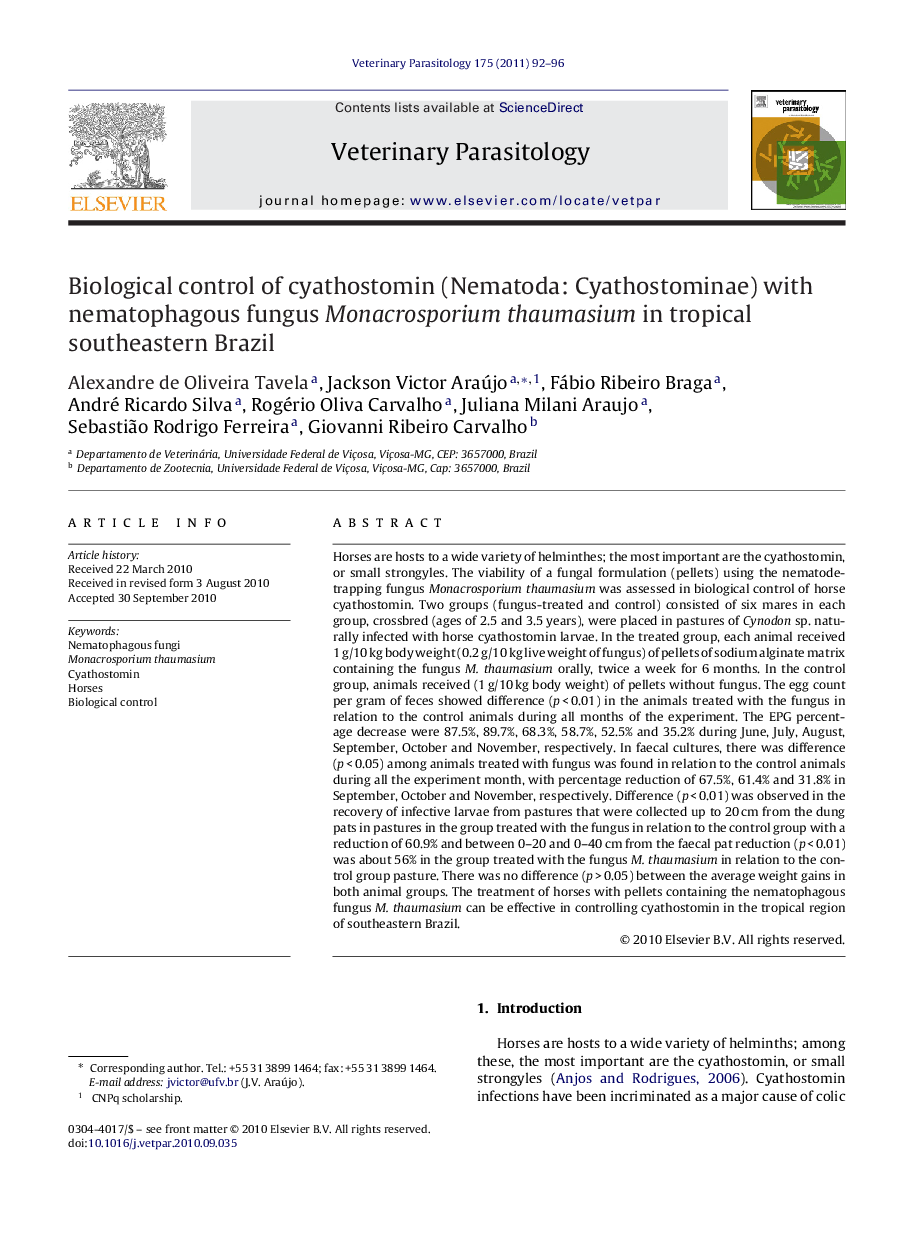| کد مقاله | کد نشریه | سال انتشار | مقاله انگلیسی | نسخه تمام متن |
|---|---|---|---|---|
| 5806037 | 1555731 | 2011 | 5 صفحه PDF | دانلود رایگان |

Horses are hosts to a wide variety of helminthes; the most important are the cyathostomin, or small strongyles. The viability of a fungal formulation (pellets) using the nematode-trapping fungus Monacrosporium thaumasium was assessed in biological control of horse cyathostomin. Two groups (fungus-treated and control) consisted of six mares in each group, crossbred (ages of 2.5 and 3.5 years), were placed in pastures of Cynodon sp. naturally infected with horse cyathostomin larvae. In the treated group, each animal received 1 g/10 kg body weight (0.2 g/10 kg live weight of fungus) of pellets of sodium alginate matrix containing the fungus M. thaumasium orally, twice a week for 6 months. In the control group, animals received (1 g/10 kg body weight) of pellets without fungus. The egg count per gram of feces showed difference (p < 0.01) in the animals treated with the fungus in relation to the control animals during all months of the experiment. The EPG percentage decrease were 87.5%, 89.7%, 68.3%, 58.7%, 52.5% and 35.2% during June, July, August, September, October and November, respectively. In faecal cultures, there was difference (p < 0.05) among animals treated with fungus was found in relation to the control animals during all the experiment month, with percentage reduction of 67.5%, 61.4% and 31.8% in September, October and November, respectively. Difference (p < 0.01) was observed in the recovery of infective larvae from pastures that were collected up to 20 cm from the dung pats in pastures in the group treated with the fungus in relation to the control group with a reduction of 60.9% and between 0-20 and 0-40 cm from the faecal pat reduction (p < 0.01) was about 56% in the group treated with the fungus M. thaumasium in relation to the control group pasture. There was no difference (p > 0.05) between the average weight gains in both animal groups. The treatment of horses with pellets containing the nematophagous fungus M. thaumasium can be effective in controlling cyathostomin in the tropical region of southeastern Brazil.
Journal: Veterinary Parasitology - Volume 175, Issues 1â2, 10 January 2011, Pages 92-96